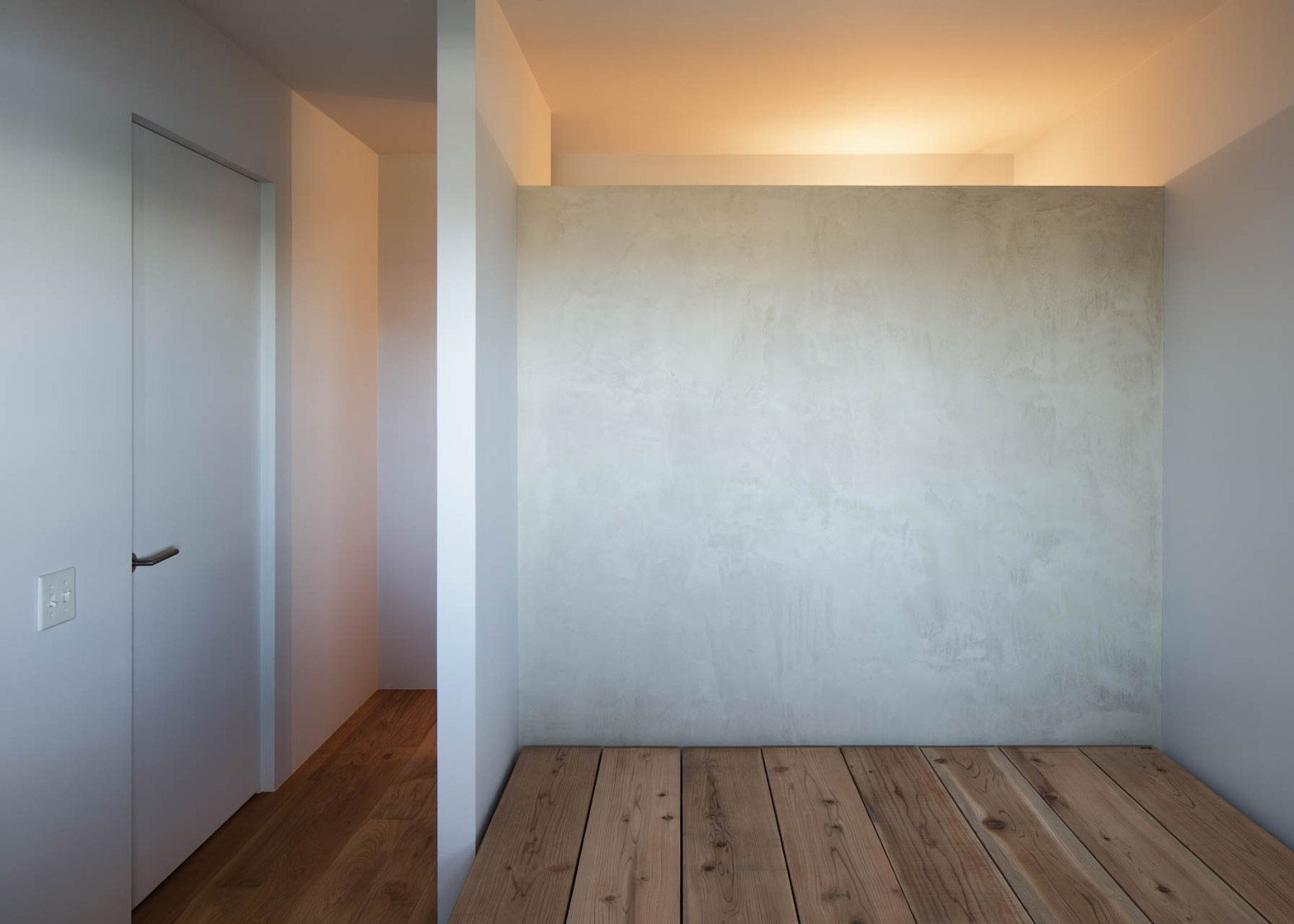An oak-edged window provides a framed view of the living room within this Tokyo apartment, intended by Yumiko Miki Architects to recreate the effect of a still-life painting (+ slideshow).
Architects Yumiko and Takashi Miki designed the Apartment in Machiya to reference a combination of iconic artworks, architecture and furniture pieces.
A window inside Villa Malaparte – the seminal 1930s house by Italian architect Adalberto Libera – inspired the oak-framed aperture between the apartment's kitchen and living area.
The aim was to create a framed view of the living and dining space that resembles a painting.
"The kitchen is the one room of the apartment where the scenery of the downtown area spreads inside through a window," Yumiko Miki told Dezeen.
"I thought that I could enjoy the scenery while standing in the kitchen doing washing up by establishing an opening and frame between there and the dining room."
"I see the scenery by making a frame, like a painting," the architect added. "In addition, the frame becomes the counter and helps the communication with a family and the visitor."
To heighten the effect, the tones, colours and compositional balance of each room were designed to match the paintings of Italian artist Giorgio Morandi, which often featured very basic still-life scenes.
Bedrooms are located towards the front, on either side of the entrance corridor, with kitchen and bathroom spaces behind. The living space is at the end of the corridor, spanning the full width of the property.
The architects were keen to use "solid" materials throughout, so combined oak and brass to create furniture pieces in each room. Floors are wooden, while walls and ceilings are painted white.
This "pure" and unfussy aesthetic also takes its cues from the iconic Miss Blanche armchair by designer Shiro Kuramata, according to the team.
In the bedroom, a partitioning wall creates a closet on one side, and an area for the bed on the other.
Inside the closet space, clothes hang from a brass pole suspended across two pieces of looped leather. Solid wood planks were used to create a raised platform for the bed.
"The solid wood has a bigger movement and secular variation than printed wood or laminated lumber," said Miki. "I took into consideration how easy it is to maintain what it is like for everyday use."
"The table in the kitchen is made from solid Japanese oak, and is maintained with wax by a resident," the architect added. "It fills the space with a united feeling of different kinds of wood lumbers."
Other recent Japanese apartment interiors include a loft in Tokyo designed to look unfinished, and a residence inspired by the coffee-soaked layers of a French dessert.
Photography is by Kenichi Suzuki, unless otherwise stated.
Project credits:
Architects: Yumiko Miki Architect
Contractor: Aida Koumuten
Furniture: Inu-it Furniture











